The discussion regarding the best cartridge for use on African plains game has been a century-old affair; a heated debate that certainly has no end in sight, nor a definitive correct answer. Its only competition is the evolving argument about dangerous game cartridges.
Bore diameters between 6.5mm and .375″ all have their champions, and all can be used on plains game with good effect. However, when it comes to a cartridge that is effective across a broad spectrum of game – from duikers to eland – the .30-’06 Springfield continues to hold one of the top positions.
 Why is that? What is it about a cartridge born for military use, more than 100 years ago, that consistently produces the results that hunters on the Dark Continent desire? Well, first of all, the .30-’06 Springfield case produces just about a perfect balance of powder capacity, velocity, striking energy and shootability. The recoil of the ’06 is mild enough for hunters of all statures and of either sex to use effectively. The bullet weights available in .308″ caliber range from 100-grains all the way up to 250-grains and all can be delivered at a sensible velocity. It is a case with enough volume to push that range of bullets so that the traditional cup-and-core bullets will perform well, yet can benefit from the advances in modern bullet construction.
Why is that? What is it about a cartridge born for military use, more than 100 years ago, that consistently produces the results that hunters on the Dark Continent desire? Well, first of all, the .30-’06 Springfield case produces just about a perfect balance of powder capacity, velocity, striking energy and shootability. The recoil of the ’06 is mild enough for hunters of all statures and of either sex to use effectively. The bullet weights available in .308″ caliber range from 100-grains all the way up to 250-grains and all can be delivered at a sensible velocity. It is a case with enough volume to push that range of bullets so that the traditional cup-and-core bullets will perform well, yet can benefit from the advances in modern bullet construction.
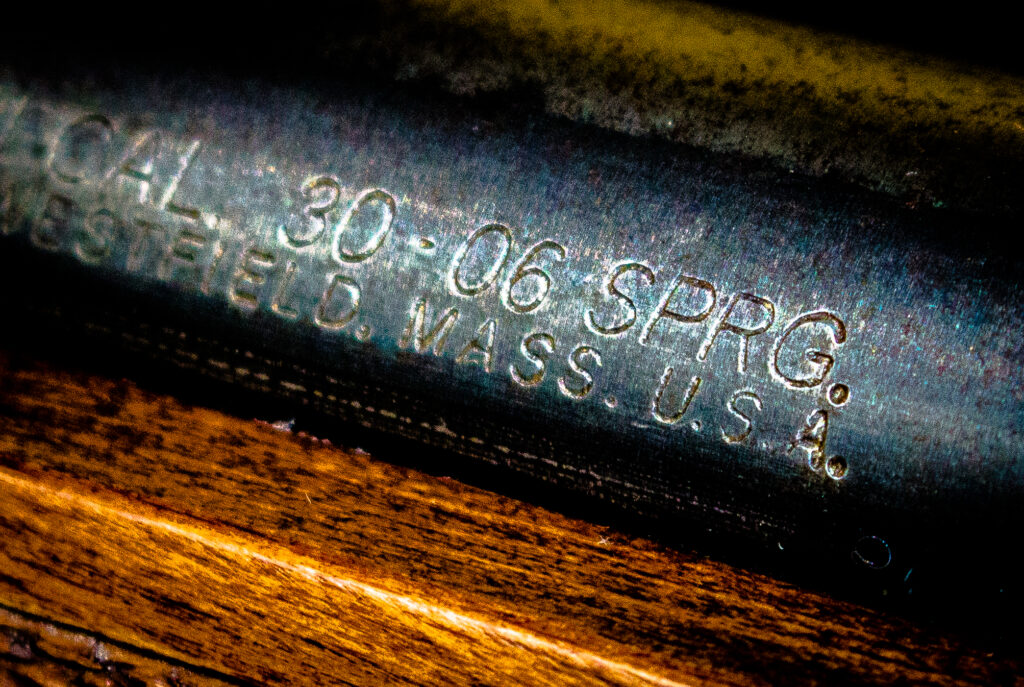 The .30-’06 Springfield was designed as a result of the Spanish-American war; the U.S. Military was using the .30-40 Krag as its cartridge du jour, and the 7×57 Mauser in the hands of the Spanish showed ballistic superiority. The Army kept the .308″ bullet diameter, but in a spitzer configuration for better downrange performance (the Krag used 220-grain round nose projectiles), but borrowed the 7×57 case head, and elongated the case to 63.3mm (2.494″).
The .30-’06 Springfield was designed as a result of the Spanish-American war; the U.S. Military was using the .30-40 Krag as its cartridge du jour, and the 7×57 Mauser in the hands of the Spanish showed ballistic superiority. The Army kept the .308″ bullet diameter, but in a spitzer configuration for better downrange performance (the Krag used 220-grain round nose projectiles), but borrowed the 7×57 case head, and elongated the case to 63.3mm (2.494″).
Although the initial development – the .30-’03 – featured a slightly longer case and the 220-grain bullet of the Krag era, it didn’t last long; by 1906 the Springfield cartridge we all know and love saw the light of day.
Historically, the 150, 165, 180, 200 and 220-grain bullets have been the most common choices in the hunting fields, and I’d be willing to bet that the 165 and 180-grain slugs are the most popular today. For the open places in Africa, such as the Kalahari, Kafue, or the plains of the Orange Free State, the ’06 offers a trajectory flat enough to hit a distant gemsbok, springbok or lechwe, yet with a good 220-grain round nose bullet, it makes a fantastic bushveld gun, fully capable of taking even the biggest eland if the shot is placed properly. And, on that topic, the .30-’06 is one of those cartridges that delivers the kind of accuracy to place your shots well, without punishing the shoulder the way some of the .300 and .338 magnums will do. I’d much rather see a hunter use a .30-’06 that he or she can shoot well, placing their shots where needed than using a caliber that gives a recoil level above that which they can handle effectively.
The .30-’06 made its bones in Africa in the hands of some very famous hunters. Theodore and Kermit Roosevelt used it throughout East Africa on their 1909-1910 safari (although TR carried the older .30-’03 version), collecting hundreds of specimens for various museums, and the effectiveness of the cartridge was well documented in the classic African Game Trails. In 1933, Ernest Hemingway used his Griffin & Howe .30-’06 in Tanganyika, opting for the ’06 with 220-grain solids over the hard-kicking .470 NE double he brought along. As Papa related in Green Hills of Africa, he took Cape buffalo and rhino effectively. While this wouldn’t fly in today’s Africa, it does demonstrate the killing power of the ’06. A 220-grain slug at the moderate muzzle velocity of 2,400 fps is tough to argue with, irrespective of species. While not the best choice for long-range work, the sectional density figure for that weight of bullet (0.331) certainly guarantees good penetration on the tougher antelope and plains game species like roan, eland, wildebeest, warthog, and zebra. Robert Ruark used a .30-06 as his light rifle on his famous safari that yielded Horn of the Hunter, and with it he took many impressive trophies.
The .30-’06 makes a great choice for any visiting sportsman and makes a great companion to the .375 H&H or one of the .416s as your heavy rifle. Let your big gun handle the dangerous game, and the ’06 will readily handle the rest. Where it is legal to use the ’06 for leopard, it makes a solid choice, allowing the hunter to properly place the shot after all the preparation and waiting that is required to hunt the golden, spotted wraith. A good 165 or 180-grain bullet – even the older cup-and-core favorites – will ruin a leopard’s day if put into the vitals. Many lions have been taken over the years with a .30-’06, but not unlike buffalo and elephant, I feel there are better tools for that job.
The .30-’06 Springfield is one of those cartridges that can be classified as ‘universal’; regardless of continent or country, I’d be willing to bet that just about any gun shop in the world will have a few boxes of .30-’06 Springfield ammunition on its shelves. That helps to make it a sensible choice for the hunter who travels the globe. Being an American, who hunts in Africa far less than I would like to, I can attest to the fact that the ought-six is also one of our most popular calibers, and I’ve rarely been in a hunting camp that doesn’t have at least one .30-’06 on the gun rack. I can also say that showing up to any hunt – not including the big beasties – armed with a good .30-’06 rifle, would make any Professional Hunter very happy.
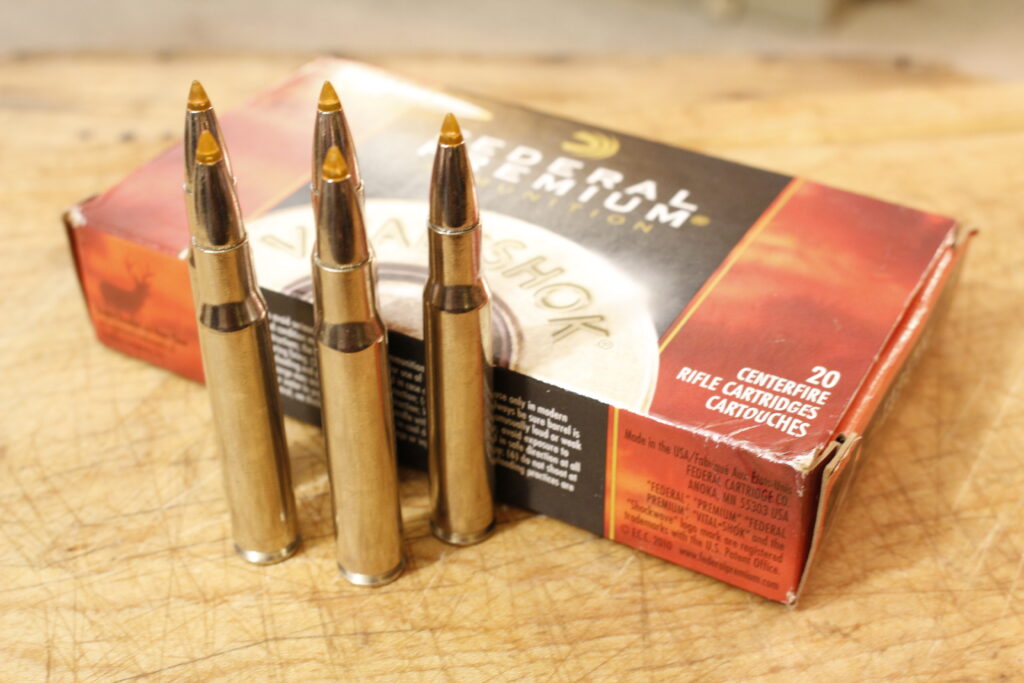
Cartridges are constantly evolving, and the hunting and shooting industry seems to be enamored with developing as many ways to launch a .308″ diameter bullet as possible. Early on, the ’06 had some serious competition in the form of the .300 Savage and the .300 Holland & Holland Magnum, and later the .300 Weatherby Magnum, .300 Winchester Magnum, and the .308 Winchester. In recent years, the .300 Remington Ultra Magnum and the .300 Winchester Short Magnum have become increasingly popular. I’ve used the .300 Winchester in South Africa, cleanly taking gemsbok and a very old ostrich with 200-grain Swift A-Frame bullets, but either shot could’ve easily been made with a .30-’06. The playing field is congested, and the competition fierce, but the veteran of two World Wars and countless hunting expeditions on every continent that can be hunted still sits at the top of the heap. The fact that the ’06 runs at moderate pressures, in comparison to the faster magnum cartridges, makes extraction in the extreme heat of Africa a breeze.
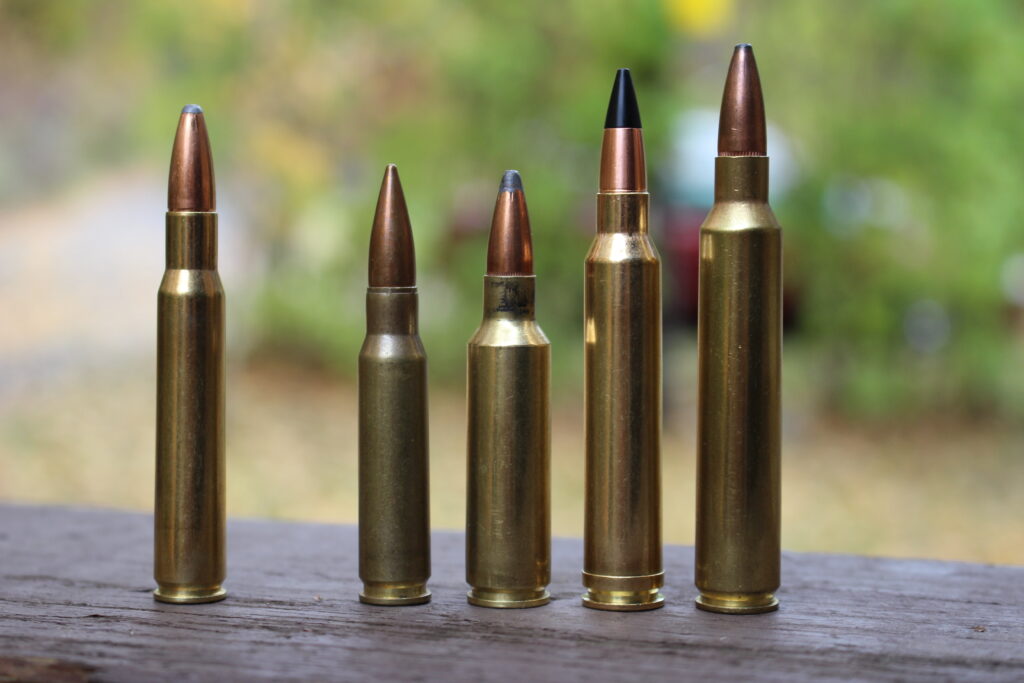
The modern developments in bullet technology, such as chemically bonding the core to the jacket or the various homogenous metal bullets that simply will not come apart, have only enhanced the already fantastic reputation that the ’06 has earned, making the venerable case that much more potent. The worries about premature bullet breakup are a thing of the past if you carefully choose your projectile.
Like modern bullets, the rifles chambered for .30-’06 have also come quite a long way. The first rifle ever commercially chambered for the Springfield was the Winchester Model 1895, a strong lever-action rifle that Theodore Roosevelt used with good effect in Africa, but the most popular were the sporterized U.S. Military bolt guns that made fine hunting rifles. Hemingway’s rifle was a Model 1903 Springfield, restocked by the New York firm of Griffin & Howe, and served him very well. My own .30-’06 rifle is a World War II-era Model 03-A3, made by Smith-Corona, and nestled in a beefy Bishop stock. It has a nice white bead front sight and a Williams rear sight that began life as a buckhorn sight until I took a good set of files to it, and made it into a safari-style shallow-V, which works much better for our early bear season here in Upstate New York when the foliage is still thick. I wouldn’t hesitate to use that rifle in the bushveld, iron sights and all. Among the classic American bolt-action rifles, I feel the Winchester Model 70 Featherweight to be one of the finest choices.
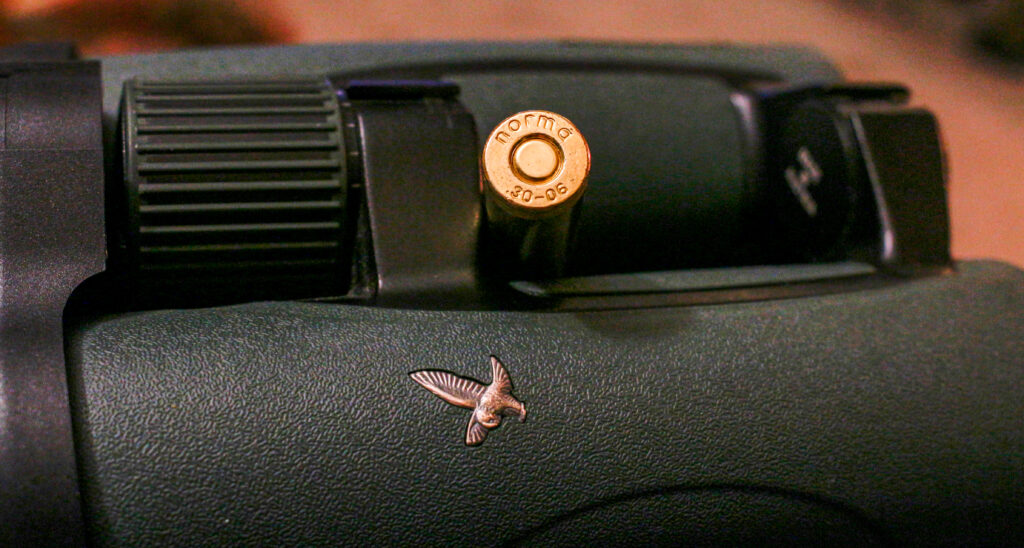 A Schnabel fore-end makes a classy touch, and the .30-’06 will work just fine with a 22″ or 24″ barrel, making for a very well balanced package that will handle very well in the thick stuff but still make a decent rifle for longer shots.
A Schnabel fore-end makes a classy touch, and the .30-’06 will work just fine with a 22″ or 24″ barrel, making for a very well balanced package that will handle very well in the thick stuff but still make a decent rifle for longer shots.
The modern rifles have some very appreciable features that will complement the .30-’06 Springfield’s attributes. The Legendary Arms Works Company from Pennsylvania, USA has a model called the Professional, which comes with a highly ergonomic synthetic stock and a Cerakote metal finish that makes it impervious to weather. A 24″ fluted barrel, with a finely crafted, removable muzzle-brake, which can be replaced with a cap for field use, prints some very accurate groups, and this lightweight little number would make a fine choice for the international hunter. Whether hunting the swamps of Bangweulu or the dunes of the Namib, The Professional in .30-‘06 will get the job done in a proper fashion.
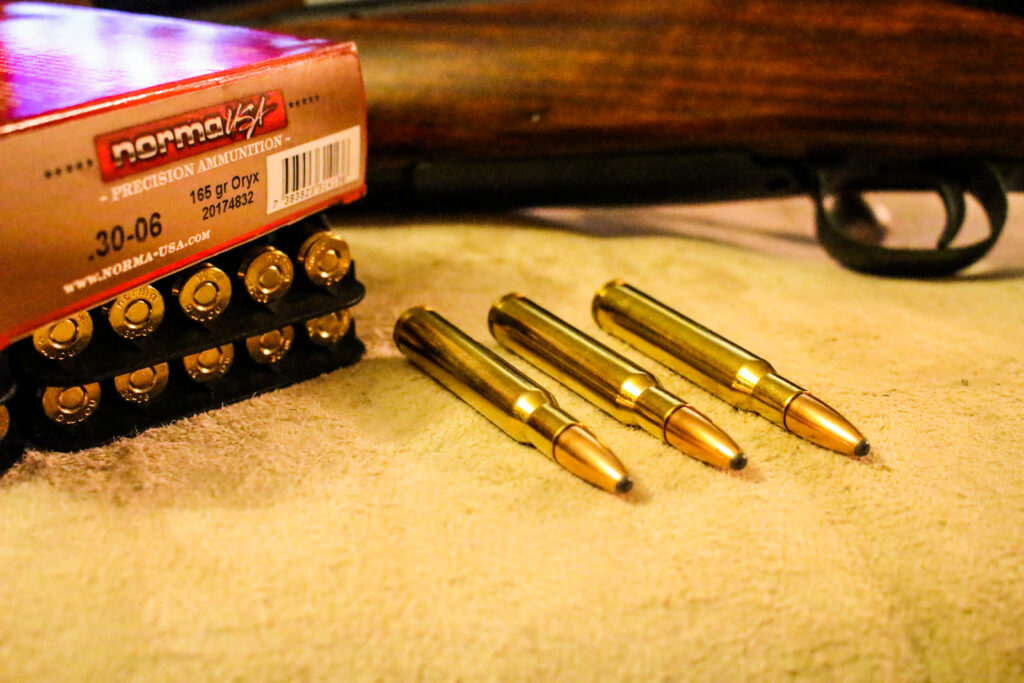
Being as popular as it is, ammunition for the .30-’06 is loaded with a wide array of different bullet types, so you can easily tailor the ammunition to the job at hand. If you’re after springbok at long distances, a 150-grain Hornady SST Superformance load, with a muzzle velocity of 3,080 fps will drop less than 7″ at 300 yards, and 19″ at 400 yards, when set to impact the bullseye at 200 yards. For a good general hunting choice, Federal’s Vital-Shok 180-grain Trophy Bonded Tipped load, the Nosler Custom ammunition line featuring the 180-grain Nosler Partition, or the Norma American PH line with the 165-grain Oryx bullet would serve just fine. For the heavyweights, a hand-loaded 220-grain North Fork semi-spitzer at 2,400 fps or so will handle just about anything short of buffalo.
Is the .30-’06 Springfield a new, whiz-bang, state of the art cartridge? No, no it isn’t. Is it a washed-up has-been, who only gets to see the light of day in the hands of the nostalgic? Nope, it’s not that either. It’s a cartridge that is so reliable that the results are almost boring, but that feature is what makes it so wonderful.
For almost 110 years, hunters of all nationalities have learned to lean heavily on the Springfield, and unless I’m very wrong, they will continue to do so for another century, especially on safari.
Safari njema!

